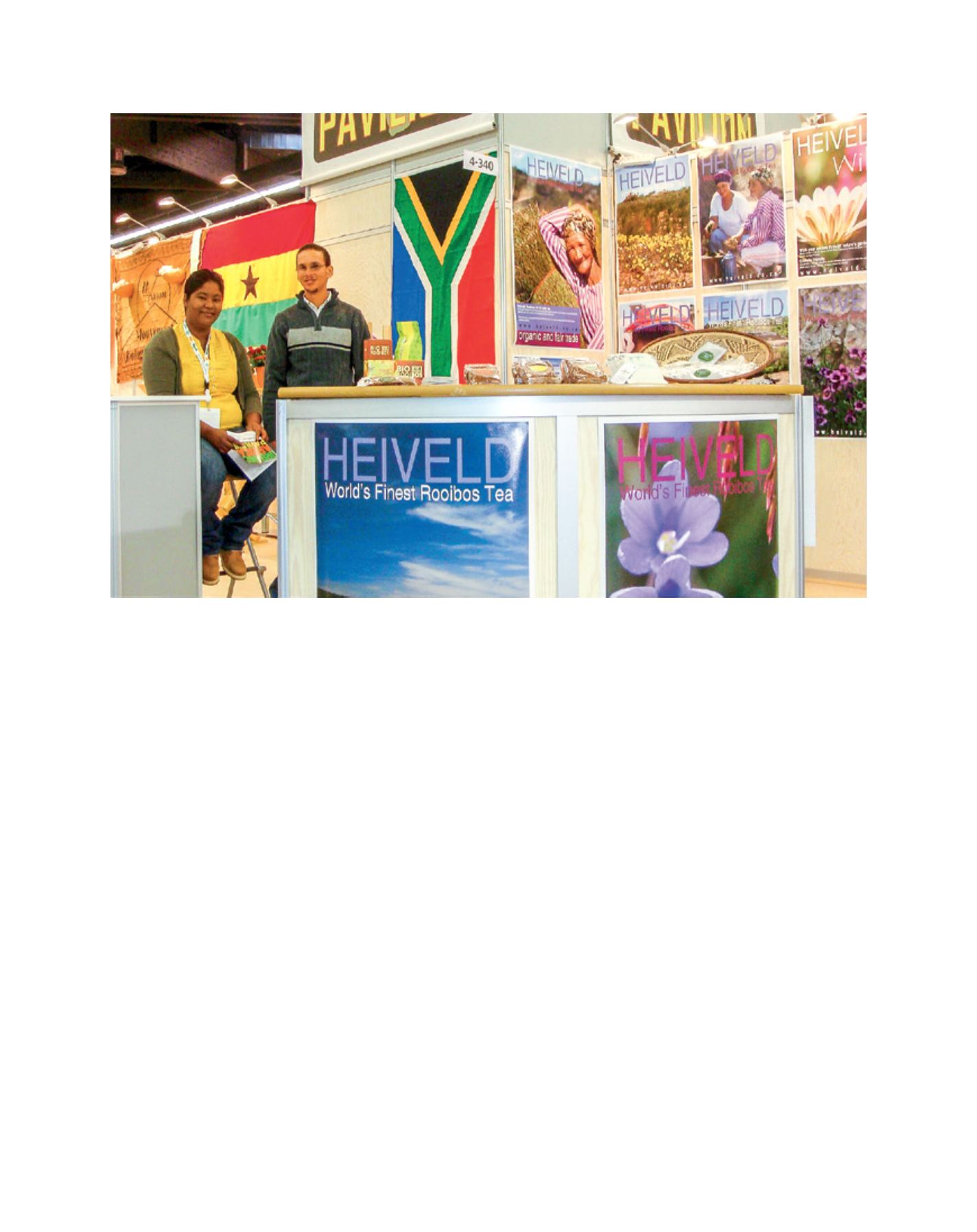

[
] 107
Certification and direct market access have enabled the
members of the Heiveld Cooperative to improve their live-
lihoods on the basis of their unique agricultural products.
However, on reflection they realized that much of the more
fertile soil of the area had been washed and blown away in
previous decades, and that the practice of clearing large lands
was leaving them vulnerable to rapid erosion. Their vision of
a sustainable future without poverty was under threat.
Inspired by their shared vision of a sustainable community
using its resources wisely, farmers in the Suid Bokkeveld set
their minds to using their knowledge effectively to prevent
excessive soil erosion, and learning from others where
appropriate. An inspiring visit to the degraded sands of the
Kalahari Desert in 2004 contributed to the evolution of new
techniques to combat erosion.
The farmers learned from one another, with the support
of mentor farmers appointed by the cooperative. The most
effective practices became incorporated in the Organic
Management Plan of the cooperative, and have become
standard practice among the farmers. These include retain-
ing or establishing buffer strips of natural vegetation in
the rooibos lands, contour ploughing, retaining all organic
matter in the lands, not burning plant material, and making
contour bunds to prevent soil erosion and promote infiltra-
tion of run-off water.
On the basis of the findings of participatory research, the
members of the cooperative also follow strict guidelines
for the sustainable harvesting of wild populations. This
ensures not only the sustainable production, but also the
conservation of the rich biodiversity of the Fynbos vege-
tation with which the wild rooibos cohabits. Soil carbon
remains undisturbed.
The shale-derived soils of the Bokkeveld Plateau are highly
vulnerable to water erosion, and because they are also the
more fertile soils, large areas have been cleared of vegetation
to sow wheat and other winter cereals and legumes. Since
European settlement of the area in the mid-1700s, soils have
been ploughed over, gradually reducing their organic matter,
breaking down their structure and decimating populations
of soil-dwelling organisms such as earthworms. In extensive
areas denuded topsoil has been washed away, leaving only
inhospitable, crusted subsoils exposed.
The wealth of all communities dwelling on the Bokkeveld
Plateau has always depended on the soil. The nomadic Khoi
communities who herded extensive flocks of sheep and
herds of cattle did no harm to the soils, but after settle-
ment European-style cultivation was introduced. As soils
were exhausted, communities became impoverished. In
the twentieth century the introduction of artificial fertiliz-
ers enabled farmers to produce crops on soils that were
otherwise depleted, but the trend towards degradation
continued. Soils once loose and friable became increasingly
unyielding when dry, and treacherously unstable when wet.
The Avontuur farm in the wetter northern part of the
Bokkeveld Plateau is a typical example of a piece of land
that was overexploited for the production of dryland crops.
Image: N Oettlé
Heiveld rooibos is available in markets on four continents
L
iving
L
and
















